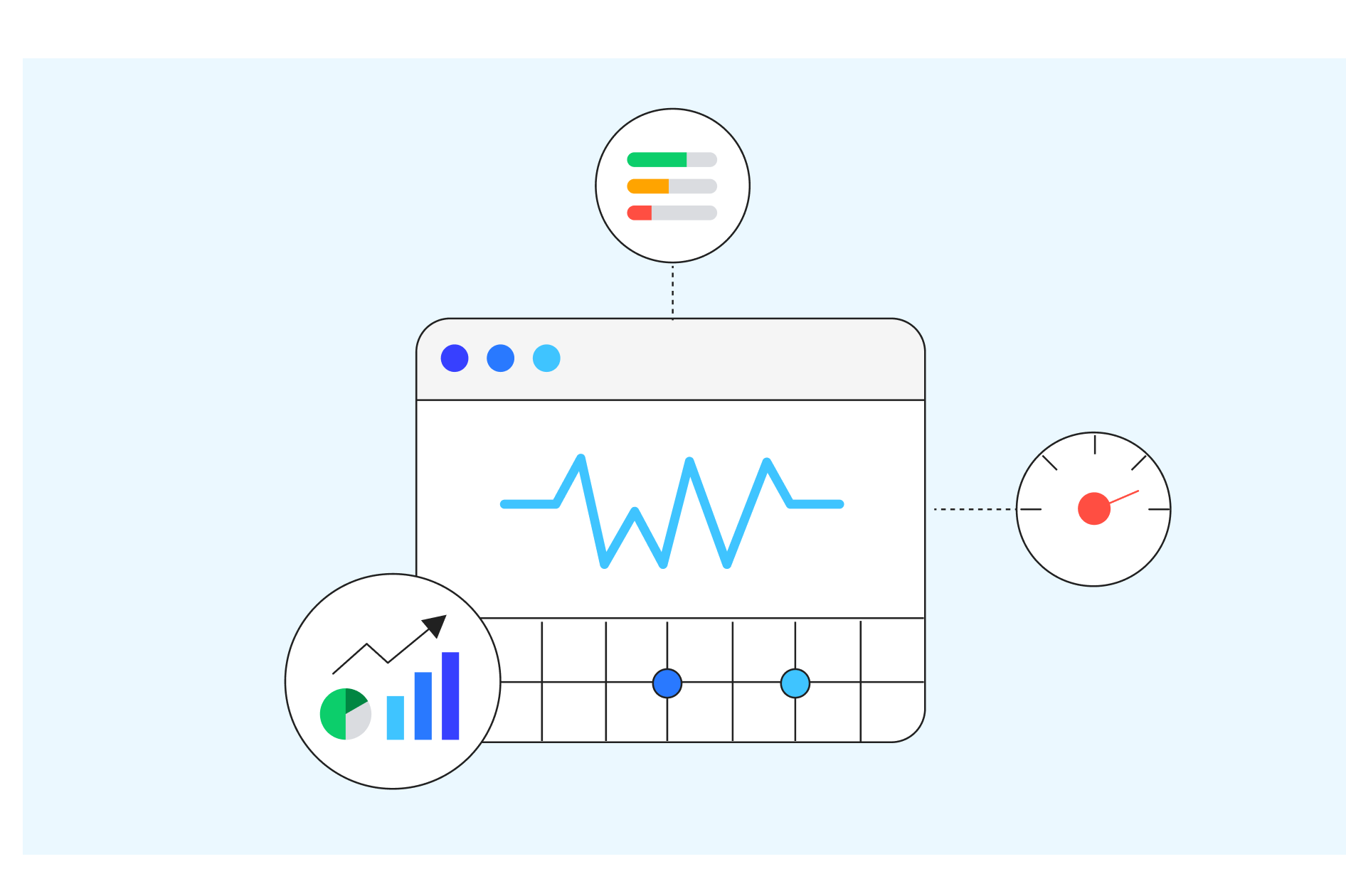Google Core Web Vitals: What They Are and How Publishers Can Improve Them

In this blog post, we will find out what Google Core Web Vitals are and how publishers can improve them. If you are a publisher, you know how important it is for your website to load pages and content quickly. This is becoming even more important; not only to provide a good user experience, but also to increase the ranking of your website in Google search results. On May 5th 2020, Google announced that from 2021 there will be a big change in its ranking methods, with the introduction of new ranking signals called Core Web Vitals.
Summary
- What are Google Core Web Vitals?
- How can you measure Google Core Web Vitals?
- Why are Core Web Vitals important?
- How to improve Google Core Web Vitals with Clickio Prism?
What are Google Core Web Vitals?
Core Web Vitals are metrics Google created to measure user experience. You could say they are quality signals that evaluate whether or not a website provides a good user experience. While Google says these metrics will evolve over time, the current set of Core Web Vitals consists of three metrics: Largest Contentful Paint (LCP), First Input Delay (FID) deprecated from March 2024, Cumulative Layout Shift (CLS) and Interaction to Next Paint (INP). Each of them focuses on a specific aspect of the user experience — loading, interactivity and visual stability. Let’s take a look at them.
Largest Contentful Paint (LCP)
Largest Contentful Paint (LCP) quantifies the loading speed of a website. Specifically, it measures how long it takes for a page’s main block of content to load. Usually, the main block of content is an image, a video, or a big block of text.
The LCP is a very important signal, because a website that loads quickly is perceived as more pleasant and engaging. According to Google, a site provides a good user experience if its main block of content loads within 2.5 seconds.
First Input Delay (FID) replaced by Interaction to Next Paint (INP) from March 2024
First Input Delay (FID) is a measure of interactivity or responsiveness. This signal quantifies the period of time between the moment when the user first interacts with a web page (e.g. clicking on a link or a button) and the moment when the site actually responds to that interaction (e.g. opening the link).
Cumulative Layout Shift (CLS)
Cumulative Layout Shift (CLS) is a measure of visual stability. It quantifies the amount of unexpected layout shifts that occur while the webpage is loading (e.g. text that moves up and down the page, or a link that changes its position while the user is trying to click on it). In a range that goes from 0 (no shifts) to 1 (maximum shifts), according to Google a site provides a good user experience if its CLS is lower than 0.1
Interaction to Next Paint (INP)
Interaction to Next Paint (INP), similar to FID, it also measures the responsiveness of the website. Yet, differently from FID that measures the input delay of the first interaction on a page, INP considers all page interactions. It ranges from 200 milliseconds to 500 milliseconds, with lower values indicating good responsiveness.
How can you measure Google Core Web Vitals?
So how can you measure Google Core Web Vitals? The peculiarity of these signals, as Google explains, is that they can operate not only on Lab Data (simulations in a controlled environment) but also on Field Data (the experience of real users). This makes the measurements much more realistic, because they take into account the actual experience of the audience and this also depends on external factors such as network speed and the device used.
Core Web Vitals can be measured using all the main Google web developer tools, including Lighthouse, PageSpeed Insights, Chrome DevTools, Search Console, web.dev’s measure tool, the Web Vitals Chrome extension and the Chrome UX Report API.
Once you have checked the Core Web Vitals of your website and you have identified the areas that need adjustment, you can move to the next phase: the optimization. Google provides useful guidelines and suggestions on how to optimize your website by improving each of the Core Web Vitals (see the following links for details): Largest Contentful Paint, Cumulative Layout Shift, and Interaction to Next Paint.
Why are Core Web Vitals important?
To promote the development of websites that provide a good user experience, Google will use Core Web Vitals as ranking factors. As a result, websites that provide a good user experience will be likely ranked higher in search results. Obviously, there are many factors that contribute to Google’s ranking. The most important one remains the relevance of the content to the query. However, if two websites have similar contents, both equally relevant to the user, the website with a better user experience will probably appear higher up on the search results.
This is why it is important to measure the Core Web Vitals of your website, and to optimize those that need adjustment.
How to improve Google Core Web Vitals with Clickio Prism?
At Clickio, we strongly believe that a good user experience is essential for the success of a website. That’s why in 2019 we launched Prism for Publishers, the ideal solution for publishers who want to maximize the user experience of their site by improving page loading speed, hence providing their users with a more pleasant and engaging experience. Such an improvement will lead to more page views and more time spent on the website, eventually increasing ad revenues.
Prism is a technology that transforms any content site into a progressive web app, making it faster, more interactive and more stable.
If you want to know more about how to improve Google Core Web Vitals on your website, please don’t hesitate to contact the Clickio team.
